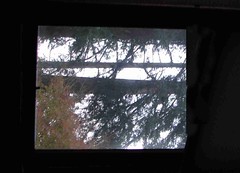Monday, December 19, 2005
fun, play, engagement
Learning can, and should, be hard fun. It's fun, in the sense that you're engaged, there is a story that you care about, and you have the power to act; it's hard in that it's not trivial-there is sufficient challenge to keep you on your toes.
Here, engagement is the word used to describe the situation when learners are captured, heart and mind, in learning--or to use formal terms, are cognitively and affectively connected to the learning epxerience.
Jean Lave at the University of California at Berkeley (1988) cites work on Brazilian street kids who can't seem to be taught mathematics, yet are actually guqite good at doing calculaiton in the monetary tasks they perform to survive (showing movational effects on learning).
A Theory of Fun
Fun is all aout our brains feeling good--the release of endorphins into our system. The various cocktails of chemicals relased in different ways are basically all the same. Science has shown that the preasurable chills that we get down the spine after exceptionally powerful music or a really great ook are caused by the same sorts of chemicals we get when we have cociane, an orgasm, oor chocolate. Basically, our brains are on drugs pretty much all the time.
One of the subtlest releases of chemicals is at that moment of triumph when we learn something or master a task. This almost always causes us to break out into a smile. After all, it is important to the survival of the species that we learn--therefore our bodies reward us for it with moments of pleasure. There are many ways we find fun in games, and I will talk about the others. But this is the most important.
Fun from games arises out of mastery. It arises out of comprehension. It is the act of soliving puzzles that makes games fun.
In other words, with games, learning is the drug.
Institute of Play
“It is the child in the man (woman) that is the source of his (her) uniqueness and creativity, and the playground is the optimal milieu for the unfolding of his (her) capacities and talents.”
—Eric Hopper
We can turn that around by playing to learn. The components of play-curiosity, discovery, novelty, risk-taking, trial and error, pretense, games, social etiquette and other ever more complex adaptive activities– are the same as the components of learning. Humans are designed by nature to play, and have played throughout their evolution.
What do most Nobel Laureates, innovative entrepreneurs, artists and performers, well-adjusted children, happy couples and families, and the most successfully adapted mammals have in common? They play enthusiastically throughout their lives.
What common denominator is shared by mass murderers, abused children, burnt-out employees, depressed mothers, caged animals, and chronically worried students? Play is rarely or never a part of their lives.
Protestant Ethic and The Spirit of Capitalism:
most people believe that play is unproductive, and therefore inferior to “productive” activities. We all have our “To Do” lists at home and at the office. We're good at prioritizing our tasks by how productive they are, and when we run out of time, we trim our lists. If we're being “good” we cut the fun stuff and do the “productive” stuff. If we're being “bad”, we “play hookey” and feel guilty. Bosses, coworkers and even family members scold us for “goofing off” if we forgo work for a game of tennis, a walk in the woods, an hour of daydreaming, a juicy novel, a vacation cruise, or a hand of bridge.
Ideas are the Currency
of the New Economy
Numbers tell the story
By Linda Naiman
From the Creativity at Work ™ Newsletter
February 2000
Genius level creativity
In 1968, George Land distributed among 1,600 5-year-olds a creativity test used by NASA to select innovative engineers and scientists. He re-tested the same children at 10 years of age, and again at 15 years of age.
Test results amongst 5 year olds: 98%
Test results amongst 10 year olds: 30%
Test results amongst 15 year olds: 12%
Same test given to 280,000 adults: 2%
"What we have concluded," wrote Land, "is that non-creative behavior is learned."
Why aren't adults as creative as children?
For most, creativity has been buried by rules and regulations. Our educational system was designed during the Industrial Revolution over 200 years ago, to train us to be good workers and follow instructions.
We now have a talent shortage in North America. Organizations that understand the relationship between creativity, innovation and performance, actively promote creativity in their employees; will win in the marketplace. The root of invention and innovation is creativity.
Return on Investment
n The Wall Street Journal reported that a two year in-house creativity course at General Electric resulted in a 60% increase in patentable concepts.
n Participants in Pittsburgh Plate Glass creativity training showed a 300% increase in viable ideas compared with those who elected not to take the course.
n At Sylvania, several thousand employees took a 40 hour course in creative problem solving. ROI: $20 for every $1 spent.
n Hewlett-Packard invested over $2 billion in R&D in 1999, and generated more than 1,300 patent applications. Net revenue: $42.37 billion. (Source: HP 2000 Annual report)
I shall also use the word "play" in a wide sense, to stand for an activity that, because it is not directed to the satisfaction of wants, entails an attitude to the world that is not concerned to use it, to get something out of it, or to make something of it, and offers satisfactions that are not at the same time frustrations.
My main point has been to suggest that, apart from "work," the activity of using the world to satisfy human wants, mankind has devised or stumbled upon other activities and attitudes towards the world, the activities I have grouped together as "play." It is in these activities that human beings have believed themselves to enjoy a freedom and an illumination that the satisfaction of wants can never supply. It is not Homo sapiens and Homo laborans, the clever users of the resources of the world, but Homo ludens, the one engaged in the activities of "play," who is the civilized one.
Get Back in the Box by Douglas Rushkoff
Establishing a playful career or company isn't as easy as it looks. It doesn't require expensive consultants, trips to the woods, or the reinvention of a company's culture based on some abstract ideal. But it does mean going against much of what we’ve been taught about competition and survival - not just in business school, but for the past five centuries! Still, just as people have stopped relating as individuals to their brands and opted instead to become members of brand cultures, producers in a renaissance era must come to think of their companies as collaborative minisocieties, whose underlying work ethic will ultimately be expressed in the culture they create for the world at large.
Sunday, December 11, 2005
life 2.0
of course, there are security issues:
Researchers at Clarkson University fooled biometric systems with fake fingerprints made out of Play-Doh nine out of ten times, demonstrating a weakness of some computer security systems.
Wednesday, December 07, 2005
Let it be
Contemplating my living painting (it rustles in the breeze), a thought from Dwight Eisenhower flowed into my head: "Farming looks mighty easy if a piece of paper is your field and your plow is a pencil."
This morning I want to wrap up a chapter on cultivating the learnscape. The chapter will be advice for composing a productive ecosystem for work and learning. A month ago, I'd have called this Design. Now I cannot.
As a verb, design means:
- design something for a specific role or purpose or effect
- conceive or fashion in the mind; invent
- make a design of; plan out in systematic, often graphic form
- create the design for; create or execute in an artistic or highly skilled manner
- make or work out a plan for; devise
After two cups of good, strong coffee, I find the painting morphing into the redwoods in the backyard, with a Japanese maple in the foreground, backlit by the fog over San Francisco Bay.
Perhaps I could have designed the painting, but I could no more design those redwoods than I could plow a field with a pencil.
 Ever see a redwood cone? They are tiny. About the size of a marble. Each cone contains sixty to a hundred tiny seeds; 125,000 seeds weigh about a pound. Sixty years ago, one of those seeds took up residence in my back yard. Several of my trees have grown more than a hundred feet tall. They weigh more than a million pounds. How the hell did this happen? The seed contained a blueprint but the seedling's relationships with its surroundings created the tree.
Ever see a redwood cone? They are tiny. About the size of a marble. Each cone contains sixty to a hundred tiny seeds; 125,000 seeds weigh about a pound. Sixty years ago, one of those seeds took up residence in my back yard. Several of my trees have grown more than a hundred feet tall. They weigh more than a million pounds. How the hell did this happen? The seed contained a blueprint but the seedling's relationships with its surroundings created the tree.New workers are seeds in the business ecosystem.


